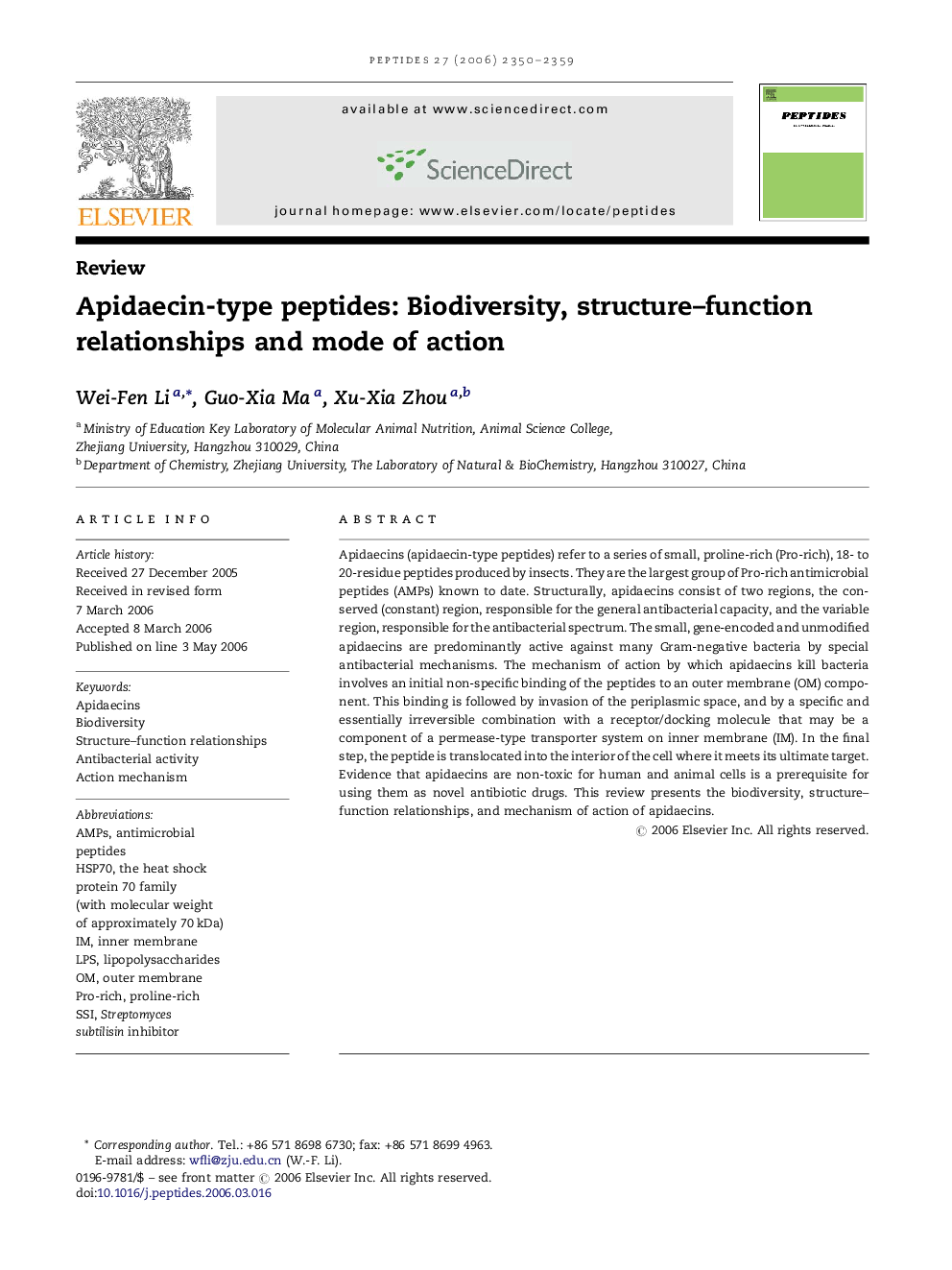| Article ID | Journal | Published Year | Pages | File Type |
|---|---|---|---|---|
| 2007984 | Peptides | 2006 | 10 Pages |
Apidaecins (apidaecin-type peptides) refer to a series of small, proline-rich (Pro-rich), 18- to 20-residue peptides produced by insects. They are the largest group of Pro-rich antimicrobial peptides (AMPs) known to date. Structurally, apidaecins consist of two regions, the conserved (constant) region, responsible for the general antibacterial capacity, and the variable region, responsible for the antibacterial spectrum. The small, gene-encoded and unmodified apidaecins are predominantly active against many Gram-negative bacteria by special antibacterial mechanisms. The mechanism of action by which apidaecins kill bacteria involves an initial non-specific binding of the peptides to an outer membrane (OM) component. This binding is followed by invasion of the periplasmic space, and by a specific and essentially irreversible combination with a receptor/docking molecule that may be a component of a permease-type transporter system on inner membrane (IM). In the final step, the peptide is translocated into the interior of the cell where it meets its ultimate target. Evidence that apidaecins are non-toxic for human and animal cells is a prerequisite for using them as novel antibiotic drugs. This review presents the biodiversity, structure–function relationships, and mechanism of action of apidaecins.
